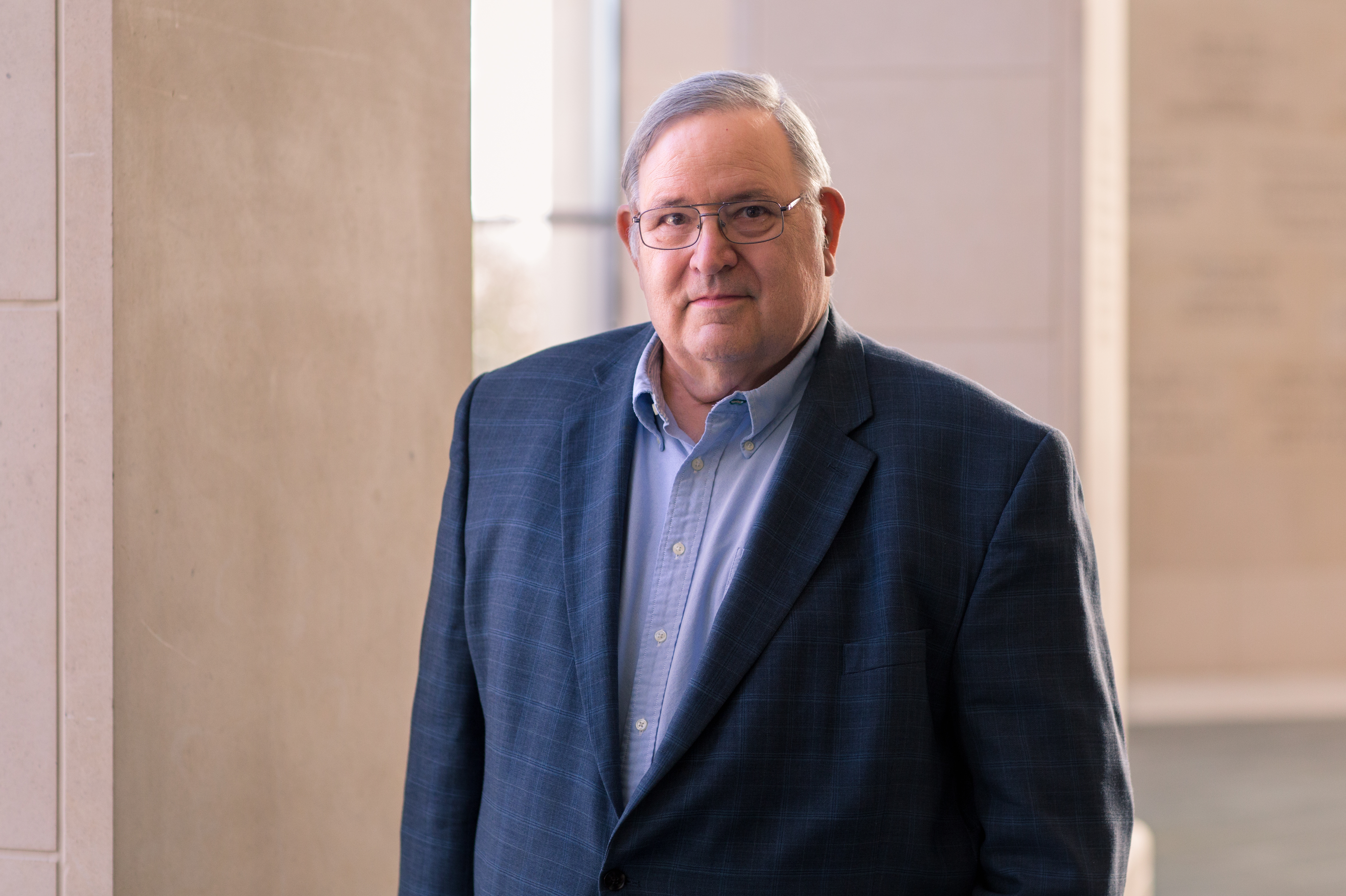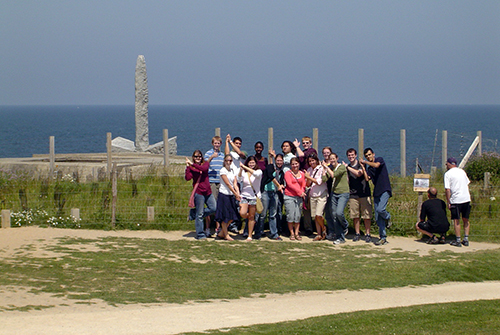When Dr. Jim Bradford lectured about World War II, it was often accompanied by the Normandy horizon and the picturesque landscape of France. Students in his classes spent their weekdays visiting historical battlegrounds, monuments and museums. Their weekends were spent making memories to last a lifetime and immersing themselves in local culture, cuisine and customs.
Bradford taught his first study abroad course at Texas A&M University in 1986, and he saw from the very beginning the positive, profound effect it had on students. He knew immediately that the university’s study abroad program was worth enriching, and the experiences and lessons learned with his students recently inspired him to give back through a study abroad scholarship fund.
Lighting the Spark
As someone who grew up in Michigan, studied in Virginia and taught for two years in Malaysia, the now-retired Bradford already had an ingrained passion for traveling when he started teaching in Aggieland. With special interests in naval and maritime history, World War II, and early American history, his research explorations led him around the world. By the time he arrived in College Station, he noticed a distinct difference in the experiences of his students versus his upbringing in the North.
 Retired Texas A&M history professor Dr. Jim Bradford is passionate about helping students grow individually and teaching them the importance of traveling and studying abroad. He and his wife Judy established a study abroad scholarship fund for students through the Texas A&M Foundation.
Retired Texas A&M history professor Dr. Jim Bradford is passionate about helping students grow individually and teaching them the importance of traveling and studying abroad. He and his wife Judy established a study abroad scholarship fund for students through the Texas A&M Foundation.
“I was surprised to find that many students had little to no experience with public transport,” explained Bradford. “Some had never shared a room before. Very few had ever traveled abroad, and if they had, they had likely done so with their parents and weren’t expected to plan their own itinerary.”
A typical class with Bradford involved a preparatory travel course in College Station before flying to Paris or Rome, where students would experience an in-depth survey of World War II. Groups averaged around 20 students and the trips to France and Germany lasted five to six weeks, while programs in Italy lasted a full fall or spring semester.
In Normandy, there were two field trips per week organized by Bradford where students would visit places such as Pegasus Bridge, which British paratroopers captured on D-Day, and a museum dedicated to the Rangers led by James Earl Rudder ’32, who scaled the cliffs at Pointe du Hoc. As they visited American, British, German and Polish cemeteries, they discussed the similarities and differences in how the four nations memorialized their fallen countrymen. As they traveled through the countryside, Bradford talked about the terrain and its influence on military operations. On the weekends, students planned their own excursions through neighboring cities and countries.
Throughout the course, Bradford witnessed the positive effect that traveling had on his students. Not only does studying abroad expand horizons and cultivate a more cultured perspective, but it also helps students cross important milestones in their growth as individuals.
“I was always surprised by the level of growth I saw in each student,” said Bradford. “In somewhere like France, where English is not the native language, students were forced out of their comfort zones. Because of this, they improved exponentially in their communication and interpersonal skills.”
For many students, the prospect of studying abroad is driven more by the desire to explore a foreign country and less by the idea of completing coursework overseas. But Bradford explained that during every program, he never failed to notice a newfound passion for learning in his students. “By the end of the class, even the students who only came because they wanted to go to France were interested in learning more about their studies,” he said. “The entire experience really lit a spark in their eyes.”
Creating an Aggie Connection
 Dr. Bradford's students creating memories and building skills while studying abroad.
Dr. Bradford's students creating memories and building skills while studying abroad.
While students are undoubtedly excited to study abroad, parents are often concerned about their sons and daughters studying in a foreign country. The Texas A&M Study Abroad Program Office and its program advisers provide support for all Texas A&M programs, including 24/7 emergency response. Student participants also take a preparatory class the semester before their program, which introduces the courses to be taken in Europe, allows members of the group to get to know one another, and invites “veterans” of the program to offer advice and answer questions.
Unfortunately, the high cost of international travel deters many students from even applying to a global study program. This financial burden is part of the reason that Bradford and his wife, Judy, decided to give back to Texas A&M. By establishing the James C. Bradford Study Abroad Scholarship, they are allowing more students the opportunity to enhance their education beyond a textbook. The couple believes that the skills and experiences gained through studying abroad should be made accessible to every student wishing to explore the world.
“We hope our scholarship will lead to more students studying abroad,” said Bradford. “It’s really the chance of a lifetime. I can’t remember the number of students who returned from the program already planning their next trip back or who organized meet-ups overseas. By supporting study abroad, we’re helping create travel ties—an Aggie connection that exists around the globe.”
Learn how you can create a study abroad scholarship for Aggie students by contacting Marcy Ullmann '86, director of scholarship programs, at (979) 845-6383 or mullmann@txamfoundation.com.